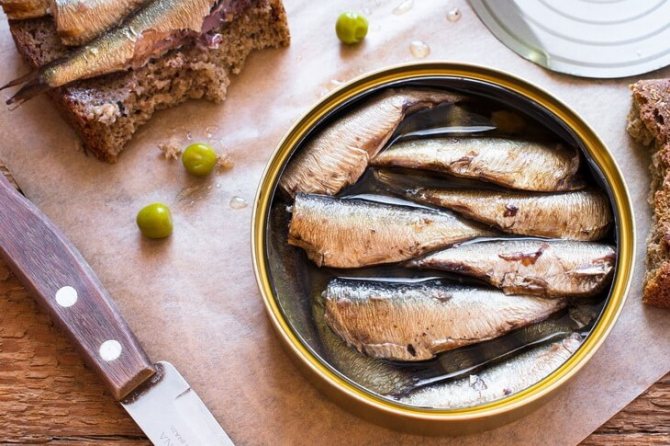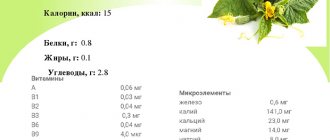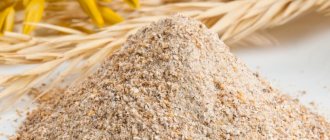Sardine benefits and harm to the human body
If you currently consume this fish infrequently, perhaps after reading how impressive the health benefits of sardines can be, you will want to change your established eating habits.
Finding the best fish sources of important omega-3 fats can seem daunting with the pollution in the world's oceans and fresh waters, depleted fish populations, toxins and heavy metals often talked about in the media.
But fortunately, by eating sardines, you provide your body with many of the nutrients it needs for optimal health without having to worry about such things as high levels of mercury contamination.
It's also easier to add sardines to dishes you're already used to - canned sardines can be easily found in most grocery stores and make a great addition to mashed potatoes, salads, soups, etc.
Start experimenting more with sardines today to reap their impressive health benefits: improving heart health and brain function, protecting against cancer, reducing inflammation, replenishing nutritional deficiencies and more!
Nutritional value of sardines
100 grams of canned sardines in oil contains (% of the recommended daily intake) ():
- Calorie content: 208 kcal (10%).
- Fat: 11.5 g (18%).
- Protein: 24.6 g (49%).
- Vitamin D: 272 IU (68%).
- Vitamin E: 2 mg (10%).
- Thiamine: 0.1 mg (5%).
- Riboflavin: 0.2 mg (13%).
- Niacin: 5.2 mg (26%).
- Vitamin B6: 0.2 mg (8%).
- Vitamin B12: 8.9 mcg (149%).
- Pantothenic acid: 0.6 mg (6%).
- Calcium: 382 mg (38%).
- Iron: 2.9 mg (16%).
- Magnesium: 39 mg (10%).
- Phosphorus: 490 mg (49%).
- Potassium: 397 mg (11%).
- Sodium: 505 mg (21%).
- Zinc: 1.3 mg (9%).
- Copper: 0.2 mg (9%).
- Manganese: 0.1 mg (5%).
- Selenium: 52.7 mcg (75%).
- Cholesterol: 142 mg (47%).
- Omega-3 fatty acids: 1480 mg.
- Omega-6 fatty acids: 3544 mg.
Composition of canned sardines
The canned food contains sardine or sardinella fish, vegetable oil, salt, and spices. The calorie content of canned sardines is 220 kilocalories per 100 grams. 100 grams of canned food contains 24.1 g of protein and 13.9 g of fat. There are no carbohydrates in fish.
Sardines are high in vitamin PP (niacin); 100 grams of fish provides 15% of the body’s daily needs. Sardines are rich in vitamins A and E, as well as vitamins B2 and B12. Like almost any fish, sardines are an excellent supplier of vitamin D to the body.
100 grams of sardine provides the body’s daily need for the microelement chromium, 10% of the daily need for fluorine, and 5.5% for zinc. Among the macroelements, the high content of sulfur (up to 18% of the body’s daily requirement) and phosphorus (12%) should be noted. Canned sardines also contain calcium, potassium, sodium, iron, cobalt, iodine and other micro- and macroelements.
Benefits of sardines
Thanks to the rich composition of sardines, the meat of this fish has many beneficial properties, such as:
Reduces inflammation and the risk of developing chronic diseases
Sardines are one of the world's best natural sources of omega-3 fatty acids - just 100 grams of sardine meat can provide more than 50% of your daily requirement. Sardines contain both EPA and DHA, which are two fatty acids that help reduce inflammation, which leads to improved heart health, helps maintain proper brain function, helps prevent gum disease, and more ().
The many beneficial properties of omega-3 fatty acids stem from their ability to act as an anti-inflammatory agent, making them effective in treating and preventing hundreds of diseases. Some of the best reasons to consume foods like sardines, which are high in omega-3s, are their ability to protect against mood disorders such as depression and anxiety, ADHD, various types of cancer, arthritis, infertility, and especially cardiovascular disease (, , ) .
It's important to note that omega-3 fatty acids reduce unhealthy cholesterol and triglyceride levels, making them one of the most important foods for a healthy cardiovascular system.
Omega-3 fats come in three forms: DHA, EPA and ALA. ALA is found in plant foods including walnuts, flax seeds, chia seeds and hemp seeds. EPA and DHA are found in fatty fish, including sardines, as well as salmon, herring and mackerel. EPA and DHA have been found to be the most beneficial and are easily absorbed by the body, making sardines an even better option for getting these specific types of fatty acids.
Provides the body with many vitamins and minerals
Sardines contain so many essential nutrients that they are one of the top foods for Vitamin B12, Vitamin D, Calcium and Selenium! In addition, sardines are an excellent source of many other B vitamins, phosphorus, iodine, copper, choline and other nutrients.
There is virtually no place in the human body that does not benefit from eating sardines - from heart health to metabolism, from cellular function to mood support.
Vitamin B12
Research has shown that about 40% of people in developed countries are actually deficient in an important vitamin called vitamin B12, which is a water-soluble vitamin that helps support nerve function, brain health, blood cell formation, energy levels, and more. ().
Vitamin B12 deficiency, even mild, can cause symptoms such as nerve damage, impaired mental function, problems with proper oxygen delivery to cells, and chronic fatigue. One can of canned sardines provides your body with a whopping 350% of your daily vitamin B12 requirement!
more about vitamin B12 on this page - Vitamin B12: what the body needs, symptoms of deficiency, sources.
Selenium
Sardines are also rich in selenium - just one can of canned sardines supplies your body with 180% of your daily requirement for this mineral. Selenium is a mineral that is actually an important antioxidant needed for your body to create and convert glutathione.
Selenium helps prevent oxidative damage in the body (free radical damage), helps iodine regulate metabolism, facilitates the body's recycling of vitamin C, and improves cellular function and protection. Selenium is an important mineral for supporting detoxification as it can relieve stress on the digestive and endocrine system such as the liver and thyroid.
Selenium deficiency can lead to thyroid dysfunction, increased risk of illness due to a poor immune system, reproductive problems due to hormone imbalances, mood disorders and cardiovascular disease.
You can learn more about selenium on this page - Selenium: benefits and harm to the body, norm, sources, side effects.
Improves bone health with high levels of calcium and vitamin D
Sardines are an excellent source of various vitamins and minerals that are essential for maintaining skeletal health in humans. Of particular note are these 3 substances that are important for bones: calcium, vitamin D and phosphorus. Consuming calcium-rich foods such as sardines can prevent mineral loss and help heal broken bones after injury.
Calcium
Approximately 99% of the body's calcium is stored in bones and teeth. The calcium present in the bone structure is used as a storage site so that when needed, the body is able to release the required amount of calcium from the bones into the bloodstream. Calcium is an extremely important mineral in the body. It is essential for transmitting nerve impulses, forming blood clots, balancing hormones, muscle contractions, and balancing your body's acid-base or pH levels.
Calcium deficiency can lead to osteoporosis, tooth decay, muscle tension, high blood pressure and many other diseases and conditions (,). For those avoiding dairy products, sardines are an excellent source of this much-needed mineral.
Vitamin D
Itamin D is an essential fat-soluble vitamin that is essential for maintaining bone health as it promotes the absorption of calcium as well as magnesium and vitamin K. Most adults are considered to be deficient in vitamin D due to the amount of time they spend indoors.
It is often difficult to get the required amount of vitamin D from food without sufficient sun exposure, but sardines are an excellent source that helps meet the daily requirement of this vitamin by more than 160% from 1 can of canned sardines. Vitamin D deficiency can lead to soft bones (osteomalacia) or abnormal bone development (rickets), in addition to poor immune system function, mood disorders, autoimmune diseases, increased risk of various types of cancer, hormonal imbalances, low energy levels and brain diseases brain (, ,).
In addition to vitamin D, phosphorus found in sardines also plays an important role in creating and maintaining bone mineralization.
Protects against mood disorders including anxiety and depression
Due to the high omega-3 fatty acid content of sardines, eating them may help prevent mood disorders, including anxiety and depression ().
Many recent studies have focused on the mental health effects of omega-3s (especially EPA), revealing that these essential fats may play a vital role in boosting your mood and supporting healthy brain function, helping you beat depression. The brain itself is made up of about 60% fat, so getting the right ratio of fatty acids is critical to central nervous system function and your mood ().
Research has shown that as omega-3 levels in the body decrease, levels of depression tend to increase. Unfortunately, over the past few decades, the intake of omega-3 fatty acids by people living in developed countries has decreased significantly.
At the same time, the amount of omega-6 fatty acids in the diet has increased dramatically, as these types of fats are found in most processed foods and refined, hydrogenated oils. The balance between omega-6 and omega-3 fats is critical to overall health, including brain function (). An imbalance in these fats is now thought to be partly to blame for rising rates of anxiety and depression in developed countries.
Controls blood sugar levels
Sardines contain significant amounts of both healthy fats and protein, which slow down the release of sugar into the bloodstream. Combining high-protein, high-fat foods such as sardines with carbohydrate foods (especially refined carbohydrates such as white bread or pasta) helps the body release glucose (sugar) from carbohydrates into the bloodstream more slowly, which helps avoid spikes and then rapid crashes in sugar levels. in blood.
Consuming foods that contain essential fats and proteins is especially important for people with diabetes, metabolic syndrome, or other conditions associated with insulin resistance.
Helps with satiety and promotes weight loss
Thanks to their high protein and fat content, eating sardines helps you feel fuller longer and curb food cravings. Sardines are also low in calories but high in essential nutrients that many people often lack, especially omega-3 fatty acids and vitamin D. Sardines are an excellent source of low-calorie protein for people trying to eat a low-calorie diet in an attempt to lose weight.
Because sardines can help prevent many nutrient deficiencies, control blood sugar levels, and support healthy metabolism and energy levels, they are truly beneficial for almost all people, whether they are trying to lose weight or not. Eating this fish provides the human body with many nutrients that support the body after physical activity and promote a feeling of fullness, which can help you maintain a healthy weight.
Sardine is one of the least mercury-contaminated fish
One good reason to regularly eat sardines instead of other fish is their low levels of pollutants. Sardines are at the bottom of the food chain because they feed on plankton - meaning they don't absorb toxins and heavy metals like many other fish, such as red sea bass, tuna and swordfish.
Preventing contaminants from fish, including heavy metals such as mercury, is one of the biggest concerns for many people today. Therefore, eating sardines is a good way to get important omega-3 fats without the threat of toxins and heavy metals. Although many people are concerned about the depletion of fish stocks in the oceans due to overfishing, sardines are considered one of the most abundant and sustainable sources.
Sardines: the benefits and harms of fresh and canned fish
Despite the fact that not everyone likes the smell of sardines, do not write off this fish before you learn about its beneficial properties.
depositphotos.com. stevanovicigor.
Sardines are small, fatty sea fish with silvery bodies that live in different seas around the world (more than 20 varieties reach the food market).
They got their name from the Italian island of Sardinia on the Mediterranean coast, where this fish is caught and prepared in large quantities for subsequent consumption and extraction of fish oil.
Since sardines feed on marine plant matter, meaning they are at the bottom of the food chain, their concentrations of heavy metals are extremely low.
This product is perishable, so it is often canned, salted and dried to increase shelf life. On store shelves you can find sardines in oil, their own juice, tomato or mustard sauce.
The nutritional value
Sardines are an excellent source of selenium, phosphorus, omega-3 (2 g for every 100 g of fish) and omega-6 fatty acids, vitamins B2, B12 and D, as well as choline, niacin, calcium, zinc, manganese and copper.
Another important substance in this sea fish is heart-healthy coenzyme Q10.
Sardines are rich in purines, nucleic acids essential for tissue repair.
Let's not forget about the protein component. A 100-gram serving of fish covers half of your daily protein needs.
Fats make up about 10% of the weight of the fresh product. Of this amount, only a quarter comes from saturated fat, and the remaining three-quarters are healthy unsaturated fats, which:
- reduce blood cholesterol levels;
- have anti-inflammatory properties, so they help in the treatment of arthritis and asthma;
- have a beneficial effect on the nervous system, improve cognitive functions, strengthen memory;
- reduce the risk of developing cancer and cardiovascular diseases;
- can be used to combat symptoms of bipolar disorder and increase the effectiveness of antidepressants.
Saira (canned food) - benefits and harm.
Beneficial features
- Benefits for the heart.
Sardines contain several nutrients that are useful for the treatment and prevention of heart and vascular diseases. In addition to omega-3 fatty acids, the presence of vitamin B12, which is involved in glucose metabolism, is important. This vitamin reduces the risk of developing hypertension and minimizes the likelihood of a heart attack, while fatty acids prevent the formation of blood clots, thereby preventing stroke and atherosclerosis. - For bone health, sardines provide us with reserves of vitamin D and calcium, manganese and phosphorus (the latter element increases bone density). The bones in canned fish are soft, so they are also eaten to get extra doses of calcium.
- Vitamin D, selenium and fatty acids play an important role in cancer prevention.
Scientists believe that regular consumption of sardines can reduce the risk of the following types of cancer: colorectal, prostate and breast cancer, leukemia, multiple myeloma and some others. - Immune support is provided by fish oil obtained from sardines, and specifically by high concentrations of vitamin D.
- Sardines are good for the eyes and provide reliable protection against age-related macular degeneration. With regular consumption of seafood containing good doses of omega-3, the likelihood of developing dry eye syndrome (one of the common complaints when visiting an ophthalmologist) is reduced.
- Help with diabetes has been identified through animal studies. Scientists now know that sardine protein reduces cell resistance to insulin, one of the key factors in the development of diabetes.
- You can also eat sardines for weight loss, since the omega-3 substances found in fish speed up metabolism and prevent excess weight gain.
- The benefits of sardines for skin and hair consist of several factors. Unsaturated fatty acids moisturize the skin, promote the production of collagen and elastin, nourish hair follicles and accelerate hair growth. Selenium and zinc protect skin cells from the destructive effects of time and free radicals, and prevent the formation of wrinkles.
Harm and side effects
Sardines are characterized by a high content of purines, which in the human body are converted into uric acid, which contributes to the formation of kidney stones and the development of gout.
An allergic reaction may occur to the amines present in sardines, such as tyramine, serotonin, tiptamine, phenylethylamine and histamine.
Fresh or canned
Fresh sardines are the best option, but they are difficult to find commercially due to their short shelf life. Choose specimens with bright colors and shiny eyes. The meat should be quite dense and not “sink” when pressed with your finger.
It's much easier to buy canned food.
- Fish in its own juice is the most preferred option.
- Tomato sauce can cause aluminum to leach from the inside of the jar.
- Adding vegetable oil increases calories and the concentration of unhealthy saturated fats.
- Canned sardines with mustard have another drawback - high sodium content, so this product is not suitable for cores.
What are the benefits of blue whiting fish?
Sardines: benefits and harm, nutritional value Link to main publication
Source: https://poleznenko.ru/sardiny-polza-i-vred.html
Historical facts about sardines

Sardines get their name from the Italian island of Sardinia, where the fish was originally found in abundance, swimming in huge schools. This fish was first popularized by Emperor Napoleon Bonaparte. It is believed that under the rule of Napoleon the first sardines were canned and delivered to regions remote from the sea.
Sardines have been consumed throughout Europe and North America for hundreds of years, but have only recently come into the spotlight as research continues to tell us that omega-3 fatty acids have numerous health benefits and should form a significant part of everyone's diet.
Sardines were consumed in the Atlantic, Pacific and Mediterranean regions. Today Spain, Portugal, France and Norway are the leading producers of canned sardines. Sardines belong to the herring fish family - they are small, marine fish.
In fact, there are more than 20 types of sardines that are commonly sold throughout the world. All types of sardines are fatty fish, silver in color, have small bones and have the same health benefits.
Application
This product has wonderful taste. The mild taste of this fish goes well with many spices, vegetables and even fruits. Therefore, it is appropriate to add it to soups and main courses. Salads with its participation are known (there is even a vinaigrette with sardine). Some people bake it in pies or add it to pasta. Can be used as an ingredient for gourmet pizza. There are recipes for baking it with vegetables in the oven.
For a dietary menu, a pate of sardines and dried vegetables is suitable. The most exotic combinations of this product include those with bananas, apples and celery.
Harm of canned food: those suffering from purine metabolism disorders should not eat sardines in oil. Those who have an allergic reaction to fish and seafood also need to be careful. It should be remembered that the presence of fat in canned food will not benefit those who are overweight. It is better for them to choose an analogue in their own juice or tomato sauce.
Market Analytics
- COVID-19 is changing the rules of the game in the cosmetics market
- Beauty of the future: cosmetic innovations 2020
- New ingredients are the driving force of the cosmetics industry
Convenient search for beauty salons on our website
Beauty salons in Moscow Beauty salons in St. Petersburg Beauty salons in Ekaterinburg Beauty salons in Novosibirsk
Latest blog posts on our website
- Naturecream / Geranium (Pelargonium) oil for skin health and beauty
- Prostye-sovety / Save on a beauty salon: procedures that can be done at home
- Naturecream / Growth Factor - brings back youth?
- Oksana-Lezina / 3 effective abdominal exercises from a fitness instructor for beginners
- Prostye-sovety / Making perfect curls at home
- Prostye-sovety / Which hair removal method to choose
- Naturecream / Wrinkles Puppets
- Naturecream / PEPHA-TIGHT - instant skin lifting
- Naturecream / Blue light - a danger to the skin
- Naturecream / Cocoa Butter – A treat for the skin
Latest forum topics on our website
- Mrs._Smith / Badly sunburned! What to do?((
- Ice / Is it necessary to combine fitness classes with a diet?
- Antonova / What can be used for hair loss?
- Radio operatorKat / Who was on a protein diet?
- Suzanna / Mesotherapy on the face
Other articles in this section
| Seabass Seabass is usually classified as a premium fish. The thing is that it contains a small amount of bones. It is often also called the sea wolf. The low calorie content of Seabass along with its high gastronomic qualities was noted. It is not surprising that adherents of a healthy lifestyle and gourmets who love seafood love to enjoy them. |
| Coho Salmon Pacific waters are rich in species of flora and fauna. The huge quantity of fish attracts many fishing companies. One of the popular types of Pacific fish is coho salmon. Belonging to the salmon family, the fish can have a wide variety of sizes. Basically, this factor depends on the habitat. The largest individuals are observed in Asian waters - their length can reach one meter and weight up to 15 kg. In the waters of North America you can find quite a lot of coho salmon, but of a much smaller size. |
| Smoked mackerel Mackerel is a very common fish that lives in the temperate waters of almost all oceans. At the same time, this fish can be called quite unpretentious. Very often it is found in those waters where the temperature regime is quite varied. The fish belongs to the mackerel family. This species is extremely popular in industry: the fish is caught in huge quantities, and the demand for it is not becoming less. |
| Bream Bream is a fairly large fish of the carp family, reaching a weight of 10 kg. It has a fairly wide distribution and is often found in reservoirs located in Europe. According to the nature of its habitat, it is characterized by the formation of small flocks. In Russia, since Soviet times, bream has been bred in specially equipped protected artificial ponds, where it is fattened for subsequent sale. The popularity of bream is still quite high. |
| Pangasius Pangasius belongs to marine fish from the Catfish family. For some reason, it is common to mistakenly call it the tongue of the sea. It is not right. Solefish belongs to a completely different family of fish. |
| Haddock Haddock is a marine fish classified into a monotypic genus called Melanogrammus. An individual haddock is 90-110 cm in length. The average weight of haddock usually does not exceed 3 kg, but quite large specimens weighing up to 19 kg have also been encountered. Haddocks live for about 14-15 years. |
| Horse mackerel in tomato sauce Horse mackerel is a fairly common fish, found from the coast of the United States to the Indian Ocean. This is a schooling fish, forming large schools that often enter continental waters and sea bays. The breeding season of horse mackerel usually occurs during the warm season. The basis of its diet is small fish and plankton. |
| Pickled herring Herring is a very tasty, nutritious, but at the same time delicate food, it has excellent dietary properties, is rich in valuable biological elements, is easily absorbed by the human body and, finally, gives a wide scope for culinary imagination. |
| Saury blanched in oil Saury is a sea fish that lives in the waters of the Pacific and Atlantic oceans. Saury belongs to the Makreleshchukov family. This fish has an elongated body with silvery scales. The back of the saury is quite dark in color. The length of saury reaches 40 cm, while the weight does not exceed 200 grams. The main food of fish is plankton. |
| Fried river perch Perch is a fish that lives in almost all bodies of water, except mountain rivers with fast flows and reservoirs with cold water. This type of fish has a dark green coloration at the base of its back. Toward the belly, the color changes to a more yellowish color. A characteristic feature of perch is the presence of transverse dark stripes, the number of which can reach 7 pieces. |
Where and what kind of sardine is best to buy?

Sardines can be eaten salted, smoked, stewed, fried, or boiled, but most often people buy canned sardines, which are widely available in most grocery stores. Sardines are often canned immediately after being caught because they are known to be highly perishable.
It is important to note that there is a large difference in nutrients between freshly caught wild fish and farmed fish. Wild fish should always be preferred and farmed sardines should be avoided. Fish farms often produce fish using antibiotics and pesticides, and feed the fish unnatural food.
This results in these fish having lower nutrient levels than wild fish and containing more toxins. Research has shown that farmed sardines have less edible omega-3 fatty acids than sea-caught fish and contain 20% less protein. Farmed fish is fattier and has a high concentration of omega-6 fatty acids, which can create dangerous inflammation caused by an imbalance between the levels of omega-3 and omega-6 fatty acids in the body.
It is best to buy canned sardines in olive oil or water, as opposed to sunflower and soybean oil or other types of refined oils. Sardines can generally keep for a decent amount of time once canned, but it's still best to always check the date to make sure it hasn't expired.
Store canned sardines in a cool, dry place, such as kitchen cabinets, and use them within a few months, ideally. If you can find and purchase fresh sardines, you should look for fish that smell fresh and are still shiny and firm. Always cook fresh sardines within a day of purchase as this fish is considered highly perishable.
Harm of sardines
There are some problems associated with eating sardines.
Pregnant women
Pregnant women are advised to avoid eating fish high in mercury. Mercury consumption during pregnancy has been associated with a risk of developmental delays and brain damage in the fetus.
Experts warn pregnant women to avoid eating fish such as shark, swordfish, king mackerel and malacantha because they contain mercury. However, sardines are one of the smallest sources of mercury and are therefore generally safe to eat during pregnancy in moderation (1-2 times per week) as part of a healthy lifestyle.
Main Population
The biggest concerns about sardines for the general population are the issue of sustainability, heavy metal contamination, and whether consuming canned sardines poses a health risk. As mentioned earlier, sardines are considered one of the smallest sources of mercury.
Experts believe that the benefits of eating sardines outweigh the possible health risks associated with their consumption. However, like all canned foods, it is best to try to find a brand that packages their products in cans without the chemical DPA (bisphenol-A).
DFP is a chemical commonly used in some vinyl, aluminum, and tin can linings. Can coatings are used in the production of canned sardines and other fish such as salmon or anchovies. BPA is known as an "endocrine disruptor" because it may have the ability to disrupt the body's hormonal balance and negatively impact the endocrine system.
More research is needed to determine how much BPA leaks into fatty fish when they are packaged in cans containing the chemical, as the only research that has been done so far is small and inconclusive. At the same time, look for cans that are labeled as bisphenol-A-free (BPA)-free when possible.
To avoid contributing to the depletion of fish stocks, it is best to look for sardines that are caught from the Pacific seas. If possible, try to avoid Mediterranean sardines as the fish is rapidly depleting in the Mediterranean Sea.
Tags: Sardine
- Related Posts
- What is foie gras?
- Is salmon eaten raw or is it unhealthy?
- Do people eat jellyfish?
« Previous entry









